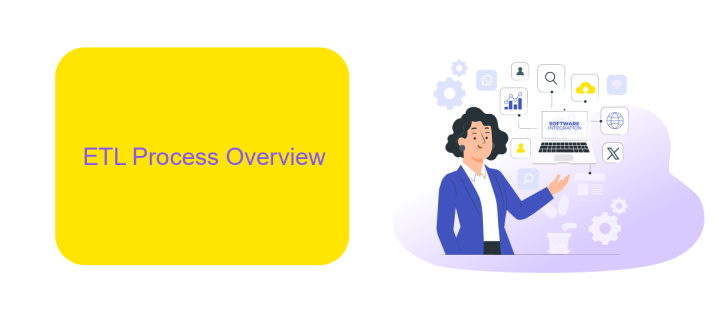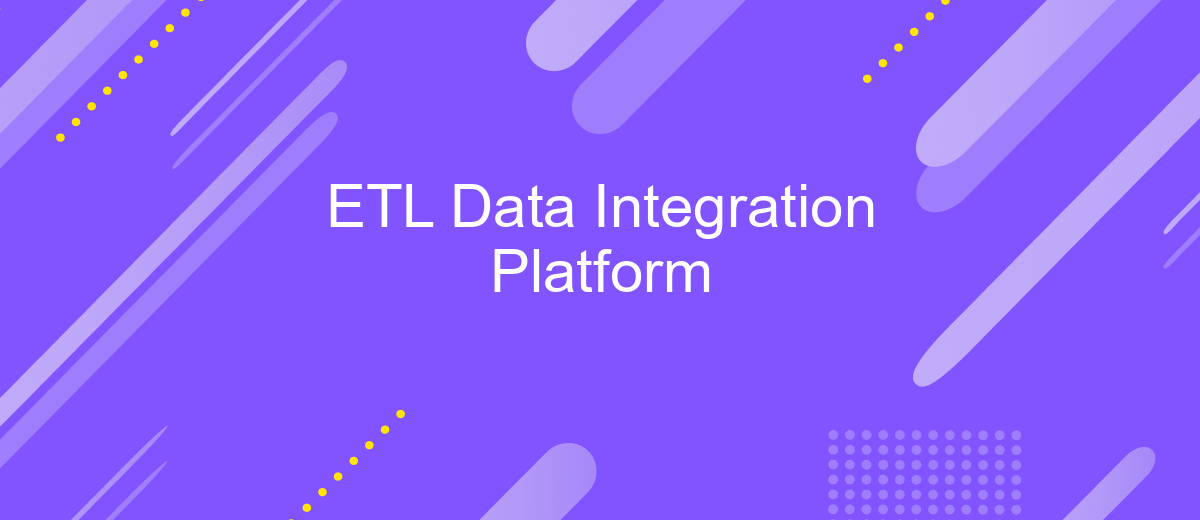ETL Data Integration Platform
In today's data-driven world, businesses rely on accurate and timely information to make informed decisions. An ETL (Extract, Transform, Load) Data Integration Platform plays a crucial role in consolidating data from various sources, transforming it into a usable format, and loading it into a centralized repository. This process ensures seamless data flow, enhances data quality, and supports robust analytics and reporting capabilities.
Introduction
ETL (Extract, Transform, Load) Data Integration Platforms are essential tools for modern businesses, enabling seamless data flow between disparate systems. These platforms extract data from various sources, transform it into a usable format, and load it into a target system, ensuring data consistency and accessibility. The efficiency of ETL processes is critical for data-driven decision-making and operational efficiency.
- Extract: Gathering data from multiple sources.
- Transform: Converting data into a suitable format.
- Load: Inserting transformed data into the target system.
ApiX-Drive is a powerful service that simplifies the setup of data integrations. It allows users to connect various applications and automate workflows without needing extensive technical expertise. By leveraging such services, businesses can streamline their ETL processes, reduce manual intervention, and enhance data accuracy. ApiX-Drive's user-friendly interface and robust features make it an invaluable tool for efficient data integration.
ETL Process Overview

The ETL (Extract, Transform, Load) process is a fundamental aspect of data integration platforms, enabling the seamless movement and transformation of data from various sources to a target system. During the extraction phase, data is collected from multiple heterogeneous sources such as databases, APIs, and flat files. The transformation phase involves cleaning, enriching, and converting the extracted data into a format suitable for analysis or further processing. Finally, in the load phase, the transformed data is loaded into a data warehouse, database, or other target systems for end-user access and analysis.
Effective ETL processes are crucial for maintaining data integrity, consistency, and quality. Tools like ApiX-Drive can significantly streamline the integration setup, allowing users to connect different data sources with minimal effort. ApiX-Drive offers a user-friendly interface and automated workflows, reducing the complexity and time required for manual data handling. This service ensures that data is accurately transferred and transformed, facilitating better decision-making and operational efficiency.
ELT vs ETL: Choosing the Right Approach

When determining the best data integration strategy, it’s essential to understand the differences between ELT (Extract, Load, Transform) and ETL (Extract, Transform, Load). Both approaches have their unique advantages and are suitable for different scenarios.
- Data Complexity: ETL is ideal for complex data transformations before loading into the destination system, while ELT is better suited for simpler transformations that can be performed within the target database.
- Performance: ELT leverages the power of modern data warehouses to handle large-scale data processing, making it faster for massive datasets. ETL might be slower due to the transformation process occurring before loading.
- Flexibility: ELT offers more flexibility for real-time data processing and analytics, whereas ETL is more structured and suitable for batch processing.
- Tools: Services like ApiX-Drive can simplify integration setups for both ELT and ETL, providing seamless connectivity and automation between various data sources and destinations.
Choosing between ELT and ETL depends on your specific data requirements, infrastructure, and desired outcomes. By evaluating these factors, you can select the most appropriate approach to ensure efficient and effective data integration.
Challenges and Best Practices in ETL

Implementing an ETL data integration platform comes with its own set of challenges. One of the primary issues is data quality, where inconsistent or incorrect data can lead to inaccurate analytics and reporting. Additionally, managing large volumes of data efficiently without compromising performance is another significant challenge.
To address these challenges, it's essential to follow best practices. Ensuring data quality through rigorous validation processes and employing advanced data profiling techniques can mitigate many issues. Moreover, scalability should be a core consideration in the design phase to handle growing data volumes seamlessly.
- Validate data at multiple stages to ensure accuracy.
- Use data profiling tools to identify and correct inconsistencies.
- Design the ETL process with scalability in mind.
- Leverage automated integration services like ApiX-Drive for streamlined workflows.
By adhering to these best practices, organizations can overcome common ETL challenges and achieve efficient, reliable data integration. Tools like ApiX-Drive can further simplify the process by automating data workflows, ensuring timely and accurate data transfers between systems.


ETL Success Stories and Case Studies
One notable success story in ETL data integration involves a leading retail company that streamlined its operations by implementing an advanced ETL platform. By integrating various data sources, including sales, inventory, and customer feedback, the company was able to achieve real-time analytics and improve decision-making processes. This transformation led to a significant increase in sales efficiency and customer satisfaction, illustrating the powerful impact of a well-executed ETL strategy.
Another compelling case study features a healthcare provider that utilized the ApiX-Drive service to automate data integration tasks. By leveraging ApiX-Drive's user-friendly interface and robust integration capabilities, the provider seamlessly connected disparate data systems, enhancing patient care and operational efficiency. This integration reduced manual data entry errors and ensured accurate, timely information flow across departments. Both examples underscore the critical role of ETL platforms in driving business success and operational excellence.
FAQ
What is an ETL Data Integration Platform?
Why is ETL important for businesses?
How can I automate ETL processes?
What are the common challenges in ETL Data Integration?
Can I integrate ETL processes with cloud-based applications?
Apix-Drive will help optimize business processes, save you from a lot of routine tasks and unnecessary costs for automation, attracting additional specialists. Try setting up a free test connection with ApiX-Drive and see for yourself. Now you have to think about where to invest the freed time and money!

